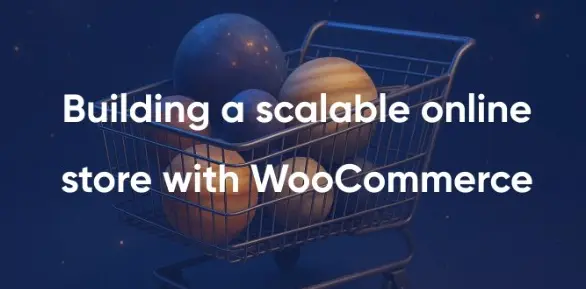Growth is messy: traffic spikes without warning, the catalog keeps adding SKUs, new channels appear, and costs creep in. If pages slow down, shoppers bounce and operations jam. This guide shows how to approach WooCommerce scalability so your scalable online store stays quick, stable, and affordable to run.
Ownership + modern architecture: Why WooCommerce scales
First, the basics. WooCommerce gives you ownership, so you can upgrade each layer instead of replatforming. Modern pieces help you grow: the REST API for custom apps, HPOS to speed up order tables, and Blocks/modern Checkout for cleaner rendering. You don’t need to rebuild the world either; the ecosystem covers payments, shipping, taxes, anti-fraud, and analytics. Add what you need and keep moving.
About technical foundation
Use managed hosting with PHP 8.x, HTTP/2 or 3, Redis object caching, and a global CDN. Keep a staging site and turn on autoscaling before the big campaign, not after it. Treat eCommerce performance optimization like a release rule:
- hit Core Web Vitals on real devices;
- convert images to WebP/AVIF;
- trim unused scripts;
- keep the theme lean.
Enable HPOS, index heavy product and order queries, and move imports/emails to queues with a real cron. Security isn’t an add-on:
- put a WAF in front;
- enforce 2FA;
- update fast;
- test restores;
- use PCI-compliant off-site gateways.
Watch everything: uptime from multiple regions, a scripted “browse → cart → checkout,” centralized errors/APM, and simple performance budgets.
Integrations that keep growth smooth
Integrations are where scale feels smooth. For checkout, cover Stripe/PayPal/Adyen plus Apple Pay and Google Pay; keep SCA/3DS effortless and turn on tokenization for fast repeats. Shipping works best with live rates, address autocomplete, batch labels, 3PL connections, and tracking by email/SMS. Sync customers and orders to HubSpot, Zoho, or Salesforce, segment by behavior, and run lifecycle emails. For inventory accuracy, connect ERP/PIM to sync products, prices, and stock; use webhooks for near-real-time updates and align the flow with HPOS. If you don’t know developers, who can provide WooCommerce integrations, follow the link.
UX that sells: Find fast, decide faster
UX is revenue. Keep categories clear, breadcrumbs visible, and search forgiving (handle synonyms and typos). Product pages should answer real questions: specs, size/fit, reviews with photos, delivery and returns spelled out, and honest totals. Checkout should be short, allow guests, support express wallets, and show progress. Design mobile-first with large tap targets, readable type, proper input modes, and good contrast. Fast beats fancy when they clash:
- lazy-load below-the-fold;
- use lightweight skeletons;
- defer non-critical JS.
Branding matters too. Edit the theme footer to suit your tone of voice, like logo, colors, useful links, not “Powered by WordPress.” Small touches raise trust.
WooCommerce 2025: Headless, AI, edge, and privacy by default
Looking ahead to a WooCommerce store 2025: consider headless or composable when the front end hits a ceiling; add services piece by piece. Use AI where it pays — recommendations, smarter on-site search, catalog copy at scale, and basic support bots. Push quick logic to the edge and run heavy syncs in background jobs. Expect WordPress/Woo to keep improving — HPOS, Blocks/Checkout, and Performance Lab work add free speed. Privacy tightens, so lean into first-party data, consent modes, server-side tagging, and durable measurement.
Also Read-
- Discover the Collective Nouns of Bush-Warblers – the Songbirds of the Bush
- Finding The Best Business Plan Writing Services Near You
- Funding for Small Business Essential Strategies to Secure Capital Quickly
